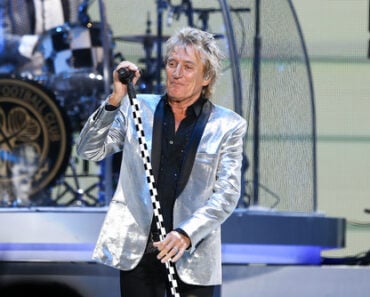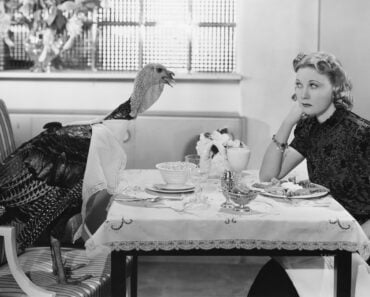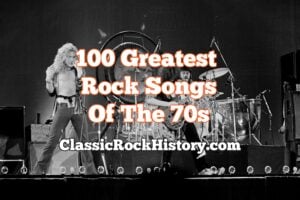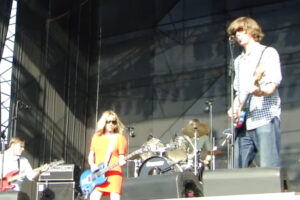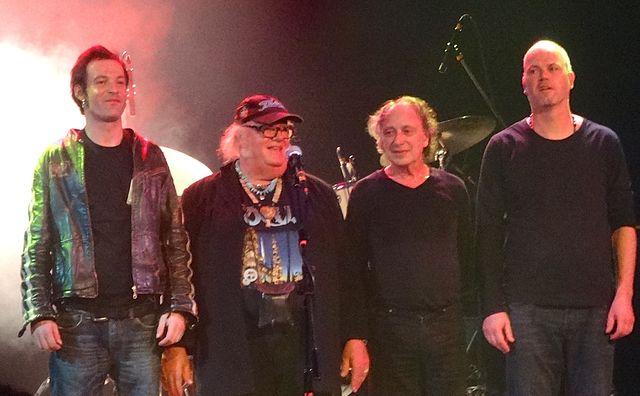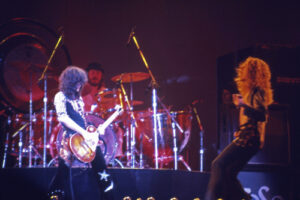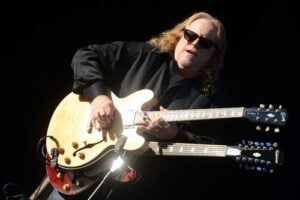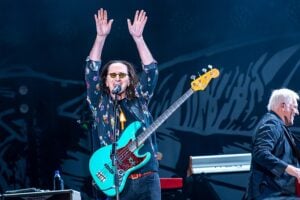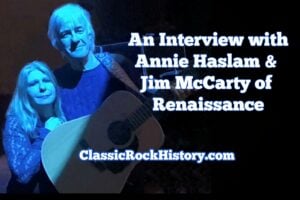
Feature Photo: Aija Lehtonen / Shutterstock.com
We went with the classics for this fun ride through the 10 Best Songs With The Word ‘On’ In The Title. Of course, there were so many to pick from as this is one of the most utilized words in song titles. Yet that just makes it all the more fun.
# 10 – On Every Street – Dire Straits
Dire Straits’ “On Every Street” is a song defined by its slow-burning tension and lyrical imagery, serving as the title track to the band’s final studio album, On Every Street, released on September 9, 1991. Written by Mark Knopfler, the song reflects the band’s shift towards a more subdued, narrative-driven style in their later years. It was recorded between November 1990 and May 1991 at AIR Studios in London, with Knopfler handling lead guitar and vocals, John Illsley on bass, Alan Clark and Guy Fletcher on keyboards, Phil Palmer on rhythm guitar, Chris White on saxophone, and Jeff Porcaro on drums. Knopfler produced the track alongside Dire Straits, ensuring that its brooding atmosphere aligned with the rest of the album. Released as a single on February 17, 1992, “On Every Street” reached number 42 on the UK Singles Chart and number 23 in France.
# 9 – Down On The Corner – Creedence Clearwater Revival
“Down on the Corner” was recorded by Creedence Clearwater Revival for their fourth studio album, Willy and the Poor Boys, which was released on November 2, 1969. Written by John Fogerty, the song was recorded earlier that year at Wally Heider Studios in San Francisco, California. The lineup for the track included Fogerty on lead vocals and lead guitar, Tom Fogerty on rhythm guitar, Stu Cook on bass, and Doug Clifford on drums. The album, like the rest of the band’s work, was produced by John Fogerty, whose tight production style helped define Creedence Clearwater Revival’s signature swamp rock sound.
Released as a double A-side single with “Fortunate Son” on October 2, 1969, “Down on the Corner” became one of the band’s biggest hits. It peaked at number three on the Billboard Hot 100 and spent multiple weeks in the top ten. The song also performed well internationally, reaching number nine in Canada and charting in several other countries. During this period, Creedence Clearwater Revival was at its commercial peak, with Willy and the Poor Boys achieving multi-platinum certification and cementing their status as one of the era’s most successful rock bands.
# 8 – Roll On Down The Highway – Bachman-Turner Overdrive
In 1974, Bachman-Turner Overdrive recorded “Roll On Down the Highway” at Sound Stage in Toronto, Ontario, for their album Not Fragile. Written by Randy Bachman and produced by the band, the session featured Randy Bachman on lead guitar and vocals, C.F. Turner on bass and vocals, and Robbie Bachman on drums. The recording captured the band’s raw, high-energy rock sound with a punchy guitar riff and a driving rhythm section that exemplified the power and simplicity of early 1970s Canadian rock.
# 7 – Keep On Loving You – REO Speedwagon
REO Speedwagon recorded “Keep On Loving You” in 1979 at the Record Plant in Los Angeles for their breakthrough album Hi Infidelity (1980). Written by lead vocalist Kevin Cronin and produced by Tom Werman, the session featured Cronin on vocals and rhythm guitar, Gary Richrath on lead guitar, Neal Doughty on keyboards, Bruce Hall on bass, and Alan Gratzer on drums. Released as a single in 1980, the song reached number one on the Billboard Hot 100 and secured top chart positions in both the United States and Canada. Its polished production and accessible arrangement helped propel the band into the mainstream, establishing “Keep On Loving You” as one of REO Speedwagon’s signature ballads.
# 6 – Walk On the Wild Side – Lou Reed
Recorded in 1972 at the Record Plant Studios in New York City, “Walk On the Wild Side” was developed as a key track for Lou Reed’s transformative album Transformer. Produced by David Bowie and Mick Ronson, the session saw Reed delivering his distinctive vocals and guitar work while session musician Herbie Flowers provided the iconic bass line that defines the song’s groove. The collaboration of these musicians, along with contributions on keyboards and percussion by other session players, helped craft a sound that captured the essence of New York’s underground life. The use of “on” in the title underscores the song’s central motif of perpetual motion—moving forward through the gritty, often untamed landscapes of urban existence.
Released in 1972, the song quickly resonated with audiences and secured a significant cultural impact, charting well internationally. Its narrative vividly portrays the lives of New York City’s outsiders, with lyrics that introduce characters who navigate the city’s fringes with raw honesty. Lines such as those depicting unconventional lifestyles reflect Reed’s intent to spotlight both the allure and complexity of life beyond mainstream norms. In this respect, “Walk On the Wild Side” employs the word “on” to emphasize a state of ongoing journey and defiance, echoing thematic elements found in other songs on this list like Aerosmith’s “Dream On” and Kansas’s “Carry On Wayward Son,” where “on” similarly conveys perseverance and continuous evolution.
# 5 – Riders On The Storm – The Doors
# 4 – Lean on Me – Bill Withers
https://www.youtube.com/watch?v=fOZ-MySzAac
# 3 -Hooked On A Feeling – B.J. Thomas
B.J. Thomas recorded “Hooked on a Feeling” in 1968 at American Sound Studio in Memphis, Tennessee, during the sessions for his album On My Way. Written by Mark James, the song featured a distinct electric sitar riff played by Reggie Young, which gave the track its unique texture. The recording lineup included Thomas on vocals, Young on guitar, Tommy Cogbill on bass, and Buddy Emmons on drums. Chips Moman produced the track, further solidifying his influence on the Memphis music scene during the late 1960s.
Released as a single on October 29, 1968, “Hooked on a Feeling” became one of B.J. Thomas’s most significant early hits, reaching number five on the Billboard Hot 100 in 1969. The song also performed well internationally, peaking at number three in Canada and charting in multiple other countries. While Thomas’s version was widely successful, it was later eclipsed in popularity by the 1974 cover by Blue Swede, which introduced the now-famous “ooga-chaka” chant. Despite the resurgence of interest in the song through that version, Thomas’s recording remained a defining moment in his career, helping to establish him as a major crossover artist between pop and country music.
# 2 – Dream On – Aerosmith
Recorded in October 1972 at Intermedia Studio in Boston, Massachusetts, the song became Aerosmith’s first major statement, showcasing their blend of hard rock and introspective lyricism. Written by Steven Tyler, the track featured Tyler on lead vocals and electric harpsichord, Joe Perry on lead guitar, Brad Whitford on rhythm guitar, Tom Hamilton on bass, and Joey Kramer on drums. Tyler also contributed mellotron, adding to the song’s orchestral atmosphere. The track was produced by Adrian Barber, whose experience in rock production helped refine its grandiose sound.
“Dream On” was initially released as a single on June 27, 1973, but only reached number 59 on the Billboard Hot 100. However, after Aerosmith gained more recognition, the song was re-released in January 1976, when it climbed to number six on the Hot 100 and solidified the band’s reputation. Over the years, it became one of the most enduring tracks in their catalog, frequently played in arenas and used in numerous films and television shows. Unlike some of Aerosmith’s later, more blues-based rock songs, “Dream On” stood apart as a piano-driven power ballad, demonstrating the band’s ability to blend rock intensity with deep, introspective emotion.
# 1 – Carry on Wayward Son – Kansas
In 1976, Kansas crafted “Carry On Wayward Son” at Studio in the Country in Bogalusa, Louisiana, for their album Leftoverture. Written by Kerry Livgren and produced by the band alongside Jeff Glixman, the recording featured Steve Walsh on lead vocals and keyboards, Kerry Livgren on guitar and keyboards, Rich Williams on guitar, Robby Steinhardt on violin and backing vocals, Dave Hope on bass, and Phil Ehart on drums. The song reached number 11 on the US Billboard Hot 100 in early 1977, marking a breakthrough that would solidify its status as an enduring rock anthem.
Check out similar articles on ClassicRockHistory.com Just click on any of the links below……
Read More: Artists’ Interviews Directory At ClassicRockHistory.com
Read More: Classic Rock Bands List And Directory
Updated July 7, 2025













